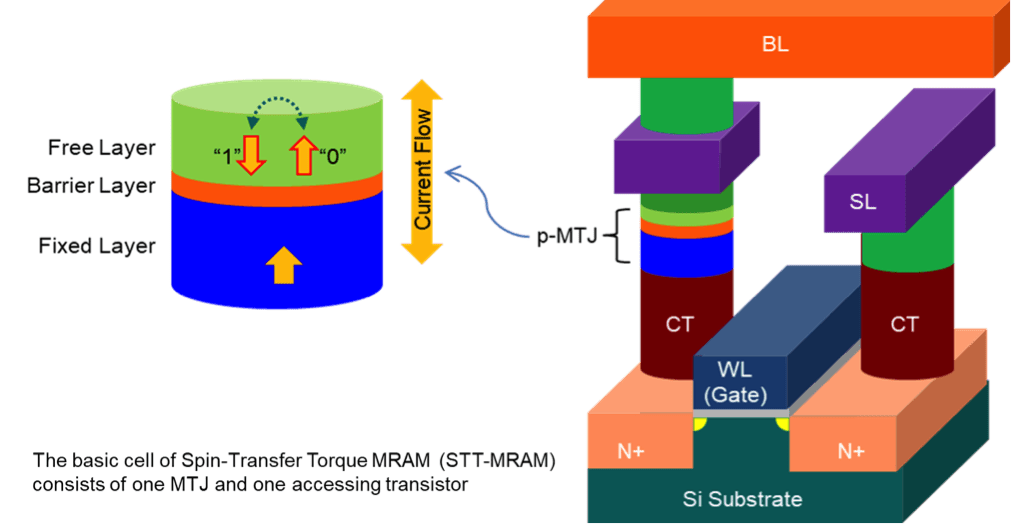
Spin Transfer Torque Magnetic Random Access Memory (STT-MRAM) is the latest design in the non-volatile magnetic RAM (MRAM) family. The information storage in STT-MRAM is a Magnetic Tunnel Junction (MTJ) instead of electric charges, which makes the difference between it and conventional RAM.
Each MTJ contains two ferromagnetic layers and one tunnel barrier layer. Figure 1 shows a conceptual illustration of an MTJ. One of the ferromagnetic layers (fixed layer) has fixed magnetic direction while the other one (free layer) can change its magnetic direction by an external electromagnetic field or a spin transfer torque. In case the two ferromagnetic layers have different directions, the MTJ resistance is High indicating a “Logic 1” state. If the two layers have the same direction, the MTJ resistance is Low, indicating a “Logic 0” state.
STT-MRAM changes the magnetic direction of the free layer by directly passing a spin-polarized current through the MTJ structure. This gives the STT-MRAMs scalability, which means the threshold current to make the state reversal will decrease as the size of the MTJ becomes smaller. This characteristic also provides STT-MRAM greater immunity from stray magnetic fields compared to Toggle MRAM.

Read Operations: Read operation begins when the wordline (WL) is selected and a voltage is applied between the bit-line (BL) and the source-line (SL). Current will pass through the MTJ or not depending on the state of the MTJ which can be sensed/measured.
Write Operations: Write operation begins when the WL is selected and a positive voltage difference is established between SL and BL for writing a “Logic 0” or a negative voltage difference is established to write a “Logic 1”. The current amplitude required to ensure a successful write is related to the material of the tunnel barrier layer, the writing pulse duration, and the MTJ geometry.
